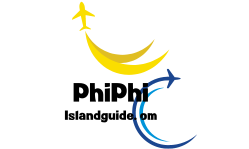Montserrat is a Caribbean gem, known for its lush green landscapes, rich cultural heritage, and breathtaking volcanic scenery.
Despite its relatively small size, this island has a fascinating history, captivating natural beauty,
and a strong sense of identity that has withstood the test of time.
📋 Table of Contents
A Brief History of Montserrat
Montserrat, discovered by Christopher Columbus in 1493, is named after the mountain monastery in Spain. Originally inhabited by the Arawak and Carib peoples, it became a British colony in the 17th century. Its colonial history is evident in its traditions and culture today.
The island became a refuge for Irish Catholics fleeing religious persecution. This influence earned Montserrat the nickname “Emerald Isle of the Caribbean.”
Montserrat’s flag and emblem display its Irish heritage, with the harp symbol and a woman representing Erin, the poetic name for Ireland.
In the 1990s, the Soufrière Hills Volcano eruption dramatically changed Montserrat, leading to the evacuation of the southern part of the island, including its capital, Plymouth.
Despite these challenges, Montserrat’s people have rebuilt their communities with resilience, creating a new capital, Little Bay, and strengthening their national identity.
Today, Montserrat remains a British Overseas Territory, blending British, Irish, and Caribbean influences.
This historical backdrop provides a unique foundation for exploring Montserrat’s natural and cultural wonders.
Natural Beauty and Landscape
Montserrat boasts stunning green hills, pristine beaches, and dense rainforests. The island’s lush vegetation has earned it the title of the “Emerald Isle of the Caribbean.”
Hiking trails like the Centre Hills offer breathtaking views and encounters with rare flora and fauna, including the endemic Montserrat oriole.
The beaches of Montserrat are tranquil and uncrowded, with black and white sand formed by volcanic activity. Rendezvous Beach, the island’s only white-sand beach, is a favorite among visitors.
Scuba diving and snorkeling reveal vibrant coral reefs and marine life around the island’s waters.
Birdwatchers and nature enthusiasts will appreciate Montserrat’s designation as an Important Bird Area, home to many species of birds.
Whether exploring the coastlines, mountains, or forests, Montserrat’s natural beauty is sure to captivate all who visit.
This serene environment provides the perfect escape from the hustle and bustle of modern life.
The Volcanic Legacy
The Soufrière Hills Volcano defines Montserrat’s modern identity. The eruptions in the 1990s buried Plymouth, transforming it into a modern-day Pompeii.
Visitors can explore the Exclusion Zone on guided tours to witness the remnants of the former capital, a hauntingly beautiful sight.
The Montserrat Volcano Observatory offers insights into volcanic activity, monitoring the island’s geological changes.
The volcano’s eruptions also shaped the island’s landscape, creating fertile soils that support Montserrat’s lush greenery.
Volcanic tours and educational exhibits provide visitors with a deeper understanding of the island’s geology.
Despite the challenges posed by the volcano, Montserrat has embraced its unique volcanic heritage.
This resilience and adaptability make Montserrat an inspiring destination for travelers worldwide.
Cultural Richness and Festivals
Montserrat’s culture reflects its African, Irish, and British heritage. This blend is most evident in its music, food, and festivals.
The island celebrates St. Patrick’s Day as a national holiday, honoring its Irish roots with a week-long festival of music, dance, and local cuisine.
The Montserrat Carnival, held in December, showcases vibrant costumes, calypso music, and traditional dances.
Montserrat’s local music scene features genres like soca, reggae, and steel pan, offering a lively soundtrack to the island experience.
Visitors can savor traditional dishes like goat water, a hearty stew, and enjoy locally distilled rum.
The cultural richness of Montserrat ensures a unique and unforgettable experience for all who visit.
Whether attending a festival or exploring local traditions, Montserrat’s charm is undeniable.
Travel Tips for Visitors
The best time to visit Montserrat is during the dry season, from December to April, when the weather is pleasant.
Travelers can reach Montserrat by ferry or small aircraft from Antigua, the nearest major island.
Accommodation options range from guesthouses to luxurious villas, catering to various budgets and preferences.
Pack light clothing, comfortable shoes for hiking, and sun protection to make the most of your trip.
Respect local customs and traditions to have a more enriching travel experience.
Visitors should also be aware of the Exclusion Zone restrictions for safety reasons.
A visit to Montserrat is an opportunity to explore a unique blend of natural beauty, history, and culture.
FAQs about Montserrat
Is Montserrat safe to visit?
Yes, Montserrat is a safe destination for travelers, with friendly locals and a relaxed atmosphere.
What is the currency used in Montserrat?
The Eastern Caribbean Dollar (XCD) is the official currency, but US dollars are widely accepted.
Do I need a visa to visit Montserrat?
Visa requirements depend on your nationality, but many visitors can enter Montserrat without a visa.
What language is spoken in Montserrat?
English is the official language, making it easy for most visitors to communicate.
What is the main airport in Montserrat?
John A. Osborne Airport is Montserrat’s main airport, located near the northern part of the island.
What are the must-visit attractions in Montserrat?
Key attractions include the Montserrat Volcano Observatory, Rendezvous Beach, and hiking trails in the Centre Hills.
Is Montserrat suitable for family vacations?
Yes, Montserrat offers a peaceful and family-friendly environment, with activities suitable for all ages.
